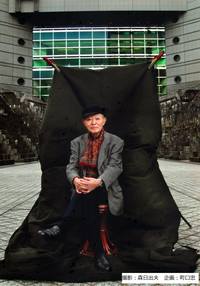
Akira Tamura
Actor
Akira Tamura (田村明, 1926–2010) was a city planner in postwar Japan. He is notable for two phases of his career: one as the chief city planner of the Yokohama city government and the other as an evangelist of machi-zukuri (town-making) among local movements. Under Japan's then-highly centralized government system, Tamura advocated for the importance of local awareness and initiatives; this led to the strengthening of local government as an institution to achieve a quality environment for all residents. Although he stayed in Yokohama for a relatively brief period, from 1968 to 1981, he achieved some of the most innovative results in Japan's postwar town planning history. His influence on Yokohama's city planning, as well as on local residents throughout Japan, remains visible and notable to this day. Tamura initially proposed major projects, called the "Six Spine Projects", to transform the structure of Yokohama in 1964, at the request of the newly elected socialist mayor Ichio Asukata. After becoming Yokohama's chief planner at the invitation of Asukata in 1968, Tamura introduced two additional planning measures: building and land control measures and urban design. As a new mechanism to reform the old administrative system, Tamura created the Bureau of Planning and Coordination, which linked the separate bureaus and forged a united entity of city government with a wider mandate. In 2000, the Architectural Institute of Japan (AIJ), the country's supreme academic institution concerned with architecture and town planning, awarded Tamura its Grand Prize for "the establishment of a theory or technique and its implementation in city planning" (AIJ, 2000), for his work in Yokohama. Tamura remains the only practical planner in the field of city planning to have won the AIJ's Grand Prize; other recipients have all been academics or architects. Tamura consistently endeavored to educate young planners by assigning them important works. Though he worked in Yokohama for only a short time, those young planners became his followers and passed on his concepts and style of work. This contributed to the success and continuation of projects, land control measures, and urban design. It is said that Tamura was initially not a master planner but gradually learned by listening to the opinions of others. His motto was "amorphous fluidity": he never remained in one place long and was always moving, searching for solutions.
Akira Tamura (田村明, 1926–2010) was a city planner in postwar Japan. He is notable for two phases of his career: one as the chief city planner of the Yokohama city government and the other as an evangelist of machi-zukuri (town-making) among local movements. Under Japan's then-highly centralized government system, Tamura advocated for the importance of local awareness and initiatives; this led to the strengthening of local government as an institution to achieve a quality environment for all residents. Although he stayed in Yokohama for a relatively brief period, from 1968 to 1981, he achieved some of the most innovative results in Japan's postwar town planning history. His influence on Yokohama's city planning, as well as on local residents throughout Japan, remains visible and notable to this day.
Tamura initially proposed major projects, called the "Six Spine Projects", to transform the structure of Yokohama in 1964, at the request of the newly elected socialist mayor Ichio Asukata. After becoming Yokohama's chief planner at the invitation of Asukata in 1968, Tamura introduced two additional planning measures: building and land control measures and urban design. As a new mechanism to reform the old administrative system, Tamura created the Bureau of Planning and Coordination, which linked the separate bureaus and forged a united entity of city government with a wider mandate.
In 2000, the Architectural Institute of Japan (AIJ), the country's supreme academic institution concerned with architecture and town planning, awarded Tamura its Grand Prize for "the establishment of a theory or technique and its implementation in city planning" (AIJ, 2000), for his work in Yokohama. Tamura remains the only practical planner in the field of city planning to have won the AIJ's Grand Prize; other recipients have all been academics or architects.
Tamura consistently endeavored to educate young planners by assigning them important works. Though he worked in Yokohama for only a short time, those young planners became his followers and passed on his concepts and style of work. This contributed to the success and continuation of projects, land control measures, and urban design. It is said that Tamura was initially not a master planner but gradually learned by listening to the opinions of others. His motto was "amorphous fluidity": he never remained in one place long and was always moving, searching for solutions.
Akira Tamura Movies & TV Shows - Watch Online
